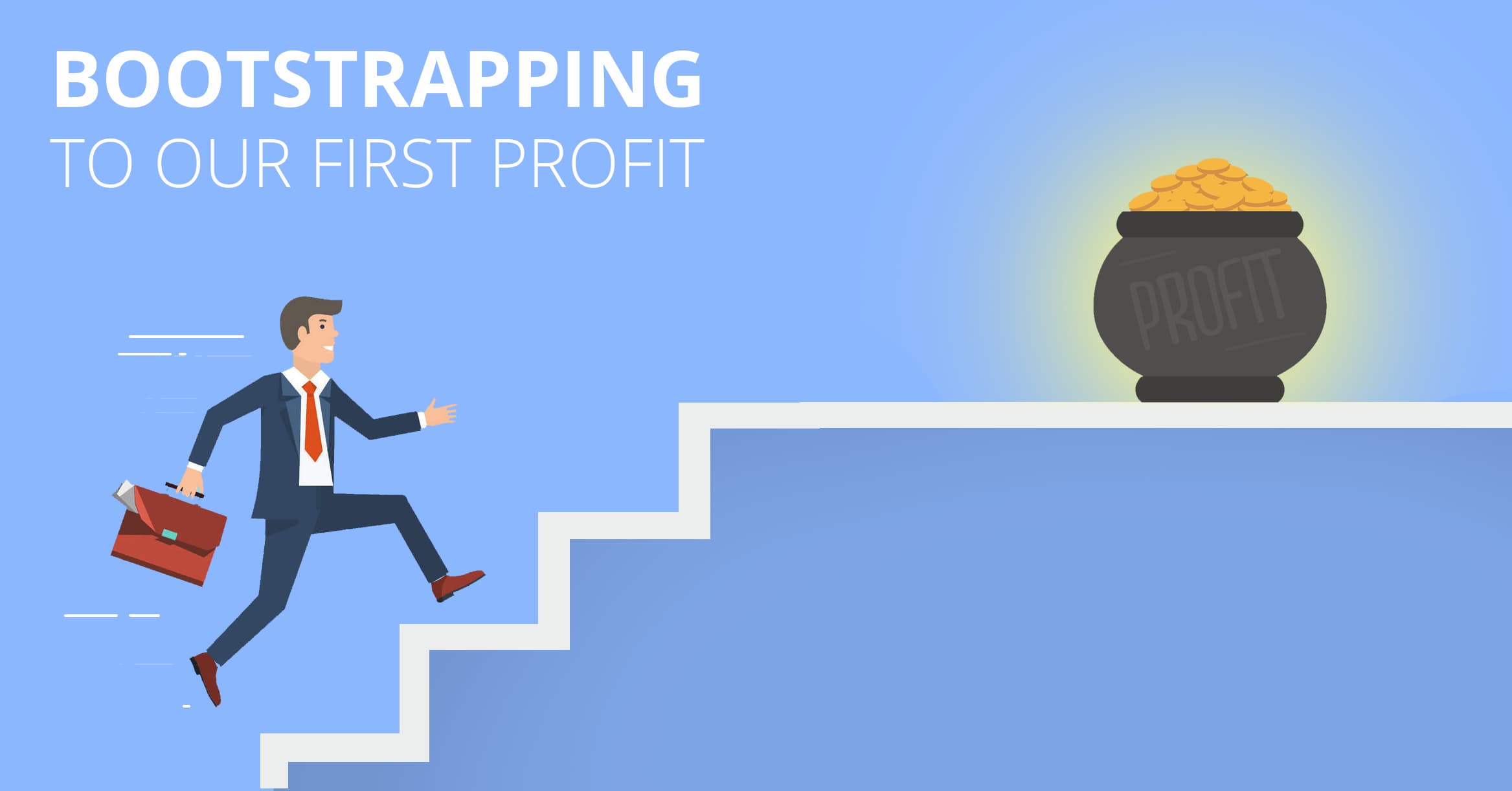It feels nice. A full 18 months after we wrote the first lines of code of CutShort, we have finally turned in profit this month. A proud moment for a bootstrapped startup like us.
Looking back, when we decided to bootstrap back in 2015, it was not a common thing to do. Every other startup was raising money as early as possible. But things have changed in recent months. Investors have now become more selective and having seen the recent debacles at overfunded startups (e.g. Housing or PepperTap), founders are more receptive to the idea of bootstrapping.
So this seems like a good time to reflect on our story of bootstrapping CutShort to first profit. There should be more discussion around this topic that most new founders are confused about.
Why did we choose to bootstrap?
We wrote a blog post detailing this. But in a nutshell, we prioritized achieving product-market fit over anything else. And we figured we didn’t need a ton of money to do that.
But the more important reason was that we wanted to avoid any distraction at that early stage. We had figured a problem and had some solution hypotheses that we had validated with some target users. With just 2 people on team, we could have started chasing investors OR we could have instead built the product to validate our assumptions. Yes, the investors could have given some valuable advice, but at that early stage we just didn’t know how to separate good advice from bad. It just made more sense to listen to our target users.
To take an example, a couple of investors who called us up advised to avoid building a two sided marketplace and instead build just the technology that could work off existing data from the internet. It naturally made more sense for them — acquiring a critical mass of users can be costly and slow. But going that route would have kept us from controlling the entire user experience and collecting the right data to yield great results to our users. Our competitors who took that advice (and had raised millions) actually didn’t survive for long.
Bootstrapping has health benefits — just like taking stairs
The more I think, the more I feel that bootstrapping is like taking stairs. If you lose direction, you can change course on the next floor. If you have taken the wrong staircase, you can come down and start again, or even start climbing a different building itself. Also, going up and down the stairs makes your team stronger and builds a fighting character.
The best thing about bootstrapping is the flexibility to build your startup organically. In our example, we started with a specific idea about “referral hiring” but realized we needed to build a critical mass first. While doing that, we discovered new unsolved issues that we began to solve. We didn’t stop there — we freely experimented to solve some other problems in adjacent markets.
The result of this free experimentation was creation of better product and a rugged team that got the experience of taking ideas to execution multiple times.
Looking to bootstrap? Here is a caveat!
There are several disadvantages of bootstrapping too. The obvious one is the lack of money to hire smart people to scale faster. The second one is lack of credibility in the market. The net effect — bootstrapping can slow you down.
The first one — lack of money to hire — can sometimes be turned into an opportunity. As I described above, not having VC dollars forced us to hire people who were not motivated by money, but by a higher purpose of building a great product and an inspiring startup. We passed on the people who seemingly liked our idea, but just couldn’t give up their “market” salaries.
The second disadvantage was the one that actually hurt us — difficulty in establishing our credibility. Funded startups simply command much more respect. They are loved by the media, chased by the talent, admired by the customers and trusted by the partners. They find less friction.
On the other hand, despite having a nice product and great traction, we always had to fight harder. While funded startups got free publicity, we had to be extra creative and convincing to get featured in the media. Ditto with partnerships — it took us longer for people to see us as credible partners.
Why bootstrapping worked for us
As we have explained earlier, there were two factors that worked in our favor. First, we were in a great market in which users had a BIG problem, one that they were accustomed to pay for. Hiring talent has been an established need and companies are accustomed paying for it. If you are trying to solve a new problem for which users have never paid in the past, it may not be so easy for you.
Second, our team was incredibly lean and cross functional. We just had 5 full time members who pulled the weight of our entire development, marketing & support operations. If you need to hire more and pay them enough salaries, your costs will be much higher.
What’s next?
Yes, this is a proud moment. It’s liberating to know that we won’t need to seed our bank account for outgoing expenses next month.
But we realized that this is only the first milestone. We need to continue growing the platform, both in India as well as globally. We are excited about our new products such as Channels and Voila and will continue to make our flagship products stronger. Alongside, we absolutely need to organically grow revenues to fuel our growth and product development costs.
The first milestone took 24 months. We definitely believe our next milestones will come about faster.
Suggestions or comments? Feel free to comment below.


